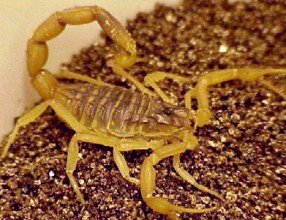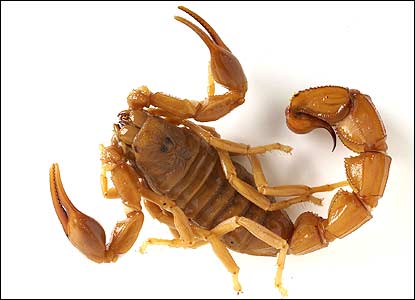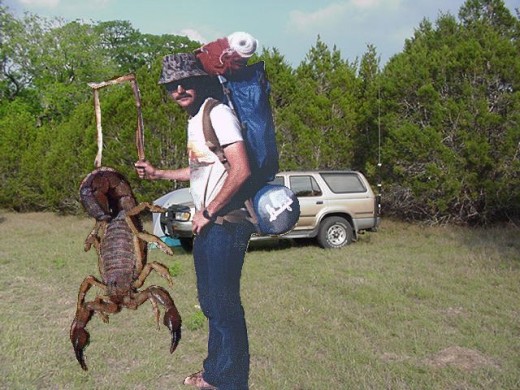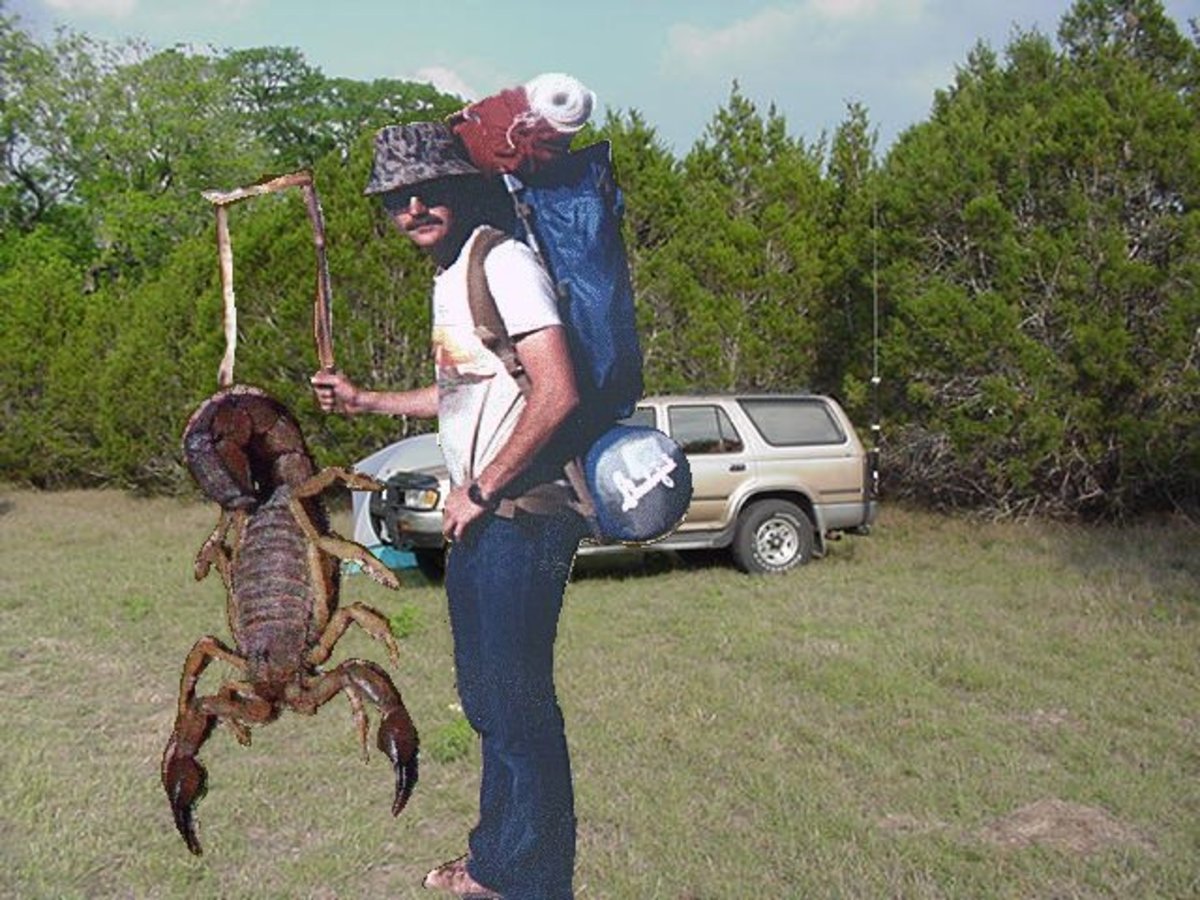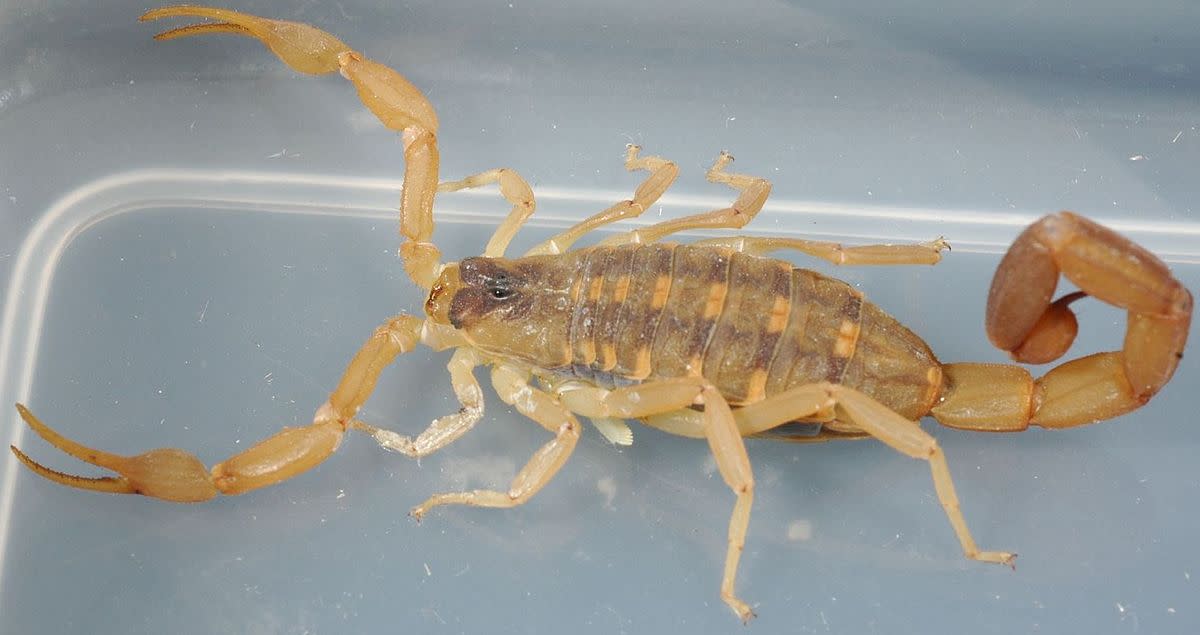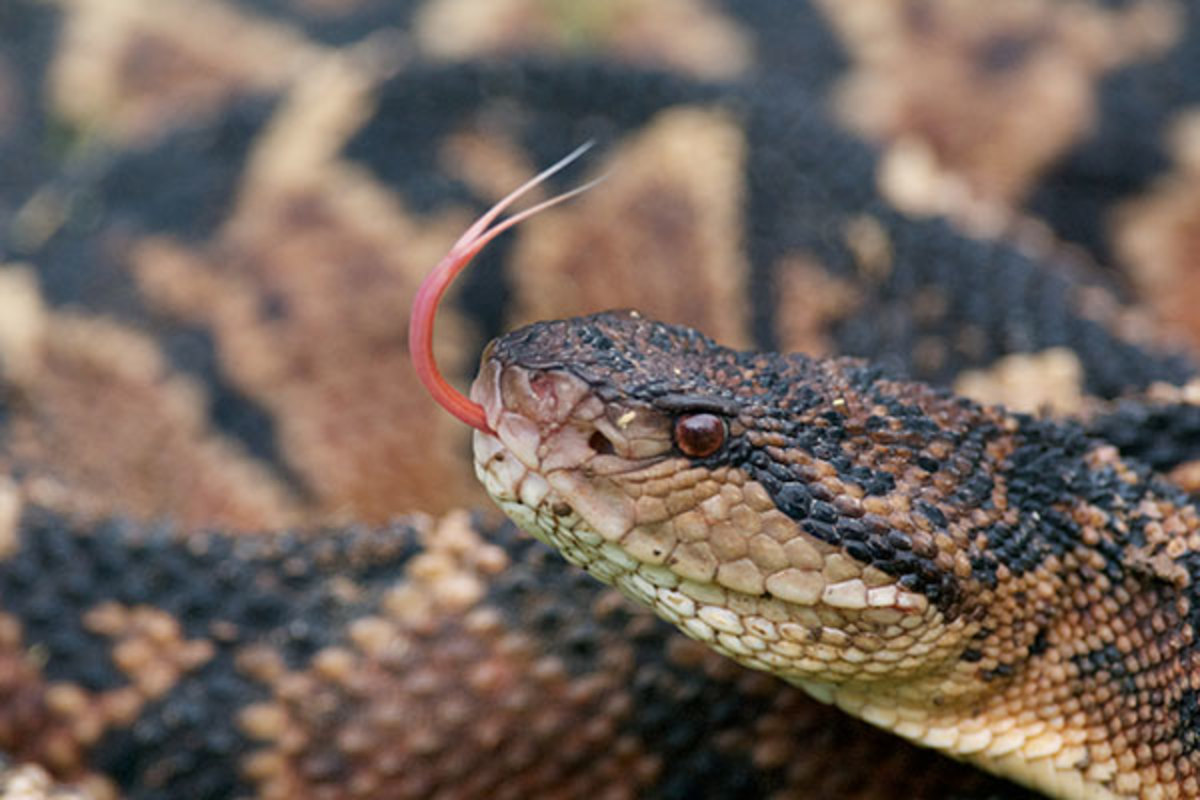The Death-Stalker Scorpion: Aptly Named.
Scorpions kill thousands every year.
Click thumbnail to view full-size





"Deathstalker" venom more lethal than any spider
Scorpions kill 10 times more people than do snakes.
As I have done a hub article on snakes and spiders, I thought I might as well finish the series up by having a look at scorpions, the arachnid feared by far more people than venomous spiders - and for good reason.
I lived in Mexico for 15 years and shared my quarters with many of these pincered and stinger-tailed little nasties. I only got stung once, in Michoacan, by kneeling on a small scorpion on the front seat of my car, and it was enough. The agony shot through my leg in an instant, and this wasn’t even a particularly dangerous member of the family. I got over it quickly, but memories of the pain returned every time I saw a scorpion after this and I was careful around them
Not that most are particularly aggressive, they mostly sting reflexively (such as when a 250 pound oaf kneels on one). They all have venom, and most scorpion stings will be felt, even from the ones not considered dangerous or life-threatening. There are about 1500 species of scorpion we know about, at least 50 of these can harm humans, and 25 of these have stings that are often fatal. In fact, the most deadly account for thousands of deaths worldwide each year, ten times more than die from snakebite!
The worst scorpions are found in the north of Africa, the Middle East, and Mexico, mainly in the drier regions, although scorpions are found all over the planet, except for in Antarctica and, curiously, New Zealand.
There is some argument - like that which surfaces when spider venom is discussed - as to which is the most deadly scorpion. My research says this dubious accolade probably belongs to the aptly named “Deathstalker,” although others like the “Fat Tailed” scorpion run a close second and look even more menacing. The deathstalker does have some pretty convincing statistics, though. It is another Africa/Middle East variety with a very complex neurotoxin venom, said to be far stronger than any spider’s, including the adult Sydney Funnel Web, or the Brazilian Wandering Spider, both of which have killed quite a few humans. Deathstalker is a medium large creature with a thinnish tail supporting a large curved stinger. Worryingly - or at least, strangely, these dangerous creatures can be bought from dealers and kept by anyone! There is strong advice all over the internet advising hobbyists to leave this particular scorpion well alone as it has killed several enthusiasts who were lax about it’s imprisonment. Collectors protest that the deathstalker is one of the most “beautiful” of the scorpions. My own feelings on the matter which no one cares about but which I will vouchsafe and be damned, is they should be left in the wild or kept by experienced zookeepers and their ilk in secure, locked viewing areas, and never sold to members of the public. “Go on, dad, he’s soooo cute!“
We have one scorpion which has colonized the Hebrides in the UK, I can personally do without getting a sting on the nether regions by a Deathstalker while having a shag in Epping Forest, thank you very much (should that desirable situation ever present itself again to this aging scribe).
Scorpions are somewhat more romantic over their pairing-up and breeding than spiders (or human teenagers). They engage in a ritualized dance with locked claws, and the male even occasionally injects a drop of is own poison, a-la date rape drug, and engages in oral sex with the female. “Sexetcetera” ought to film this. He then deposits his sperm and she shuffles over to allow it to enter her ovarium (I’m not going to bother you with all the technical names and jargon…that’s what Wikipedia’s for - and why the fugg is it all in Latin?). Then they separate for ever, boo-hoo. But there’s no cannibalization by the female in most scorpions, as in some spiders like the Black Widow.
Some of the really huge scorpions, like Mexico’s “False Scorpion,” a jet black monster which can grow to eight inches long, are entirely harmless. You can generally tell a dangerous scorpion from a harmless one by the size of the pincers. Lethal scorpions have weak looking, fragile claws, as they rely on their venom to slow and stop prey. The harmless varieties with a milder venom, on the other hand, have fairly powerful looking, crab-like claws as they tend to grab and capture most of their victims, only using their sting to assist, or to cause the prey’s tissue to liquefy, perhaps; or for defence. If you do really want to handle a scorpion, it is better picked up by the tail, making sure the stinger can’t twist and prick your finger, the claws can’t hurt you, but might not feel nice as the creature ties itself in knots trying to escape, or gets you a good one with an injection of healthy neurotoxin. Be prepared to scream loudly as you rush around in a circle trying to find antivenin that no one will have ready - even if one exists for the species that stung you, and is now beating a hasty retreat back into your sleeping bag.
The only dangerous scorpion in the USA is the Arizona Bark Scorpion, with several sub types. Nasty little fellow that can make you pretty ill but won‘t kill an adult human in good shape (unless he also has allergies). But they will, and do, kill a lot of under- five-years-old kids, in fact, a whopping 25% of children stung by a Bark do in fact die, a sobering statistic for those who camp out in desert spots in the American South West (and Mexico).
Note: Scorpions are among the oldest creatures on the planet. They first appear in the fossil record 440 million years ago, during the Paleozoic's Silurian period. That's 30 million years before the first spiders, a full 200 million years before beetles and dinosaurs, and 438 million years before modern man! Can there be any doubt they will survive us as well?
Notes added: Scorpions are all nocturnal and they fluoresce under ultraviolet light. Collectors often use a “black light” to find scorpions at night and they can be detected in the house by their eerie glow.
They have rudimentary brains consisting of a large mass of nerve tissue near the eyes. This receives and delivers information to the organs and to sensory hairs on the exoskeleton. They have no circulatory system as such: the heart is a long tube which pumps blood around the creature. They moult to grow and have several eyes, above and alongside the “prosoma” (head).
It is incredible for me to reflect they have been so successful for so long, outliving millions of other life forms on the planet, including all the dinosaurs, yet their brains and organs are so simply evolved.
Perhaps one of the reasons perhaps is they are really the ultimate killing and defensive machine, able to stun and devour reptiles such as lizards, small mammals, as well as the whole host of insects on which they prey, including other scorpions and spiders.
They really fear nothing much in the way of predators, although they are killed and consumed by quite a few larger birds, reptiles and, especially, Meercats who dig for then all day.
Notes:
Scorpions are easily distinguished by their long sting-bearing tail and a pair of pincers on long arms, known as pedipalps, at the front of the body. Despite having six to twelve eyes - an obvious pair at the centre of the carapace and two to five smaller eyes on each side - scorpions do not have good eyesight. However, they can readily distinguish light from dark and appear to have excellent low light sensitivity, which helps them to both avoid harsh sunlight and to navigate by starlight or moonlight. They sense their way around using sensory hairs and slit organs on the legs, pedipalps and body that pick up vibrations and scents (mechanoreceptors and chemoreceptors). They also have special organs on the underside of the body called pectines, which pick up ground textures and scents. Scorpions breathe through four pairs of book lungs on the underside of the abdomen. Female scorpions are more heavily built than males, with shorter tails. Colour ranges from dark grey to light brown or gold, with lighter coloured legs. Scorpions also fluoresce under ultraviolet light, which is a good way for scientists to find them in the field. The fluorescence is thought to serve as an ultraviolet sensitivity mechanism, perhaps allowing the scorpion to avoid damaging light levels.
I don't think they can be considered "good," nor "bad" as far as their effect on the planet is concerned. They would seem to prey on anything small enough to be stung, paralyzed and consumed. They would seem to have value as a great "leveler" of many species which might become a plague without their predation. They are one of the oldest creatures still around and enjoying huge success; and they really bother us very little. I have never know a ferocious scorpion that tries to sting man unless man annoys it first, or accidentally puts a hand on it. They are mainly nocturnal. Another thing I have found with very venomous creatures is that they don't always envenonate in defense more than is necessary to deter the danger. I have even found this with wasps that will sting but not inject all their venom. Wild creatures have a lot more savvy that many give them credit for. If we left them alone, they would certainly repay the favor in spades.


